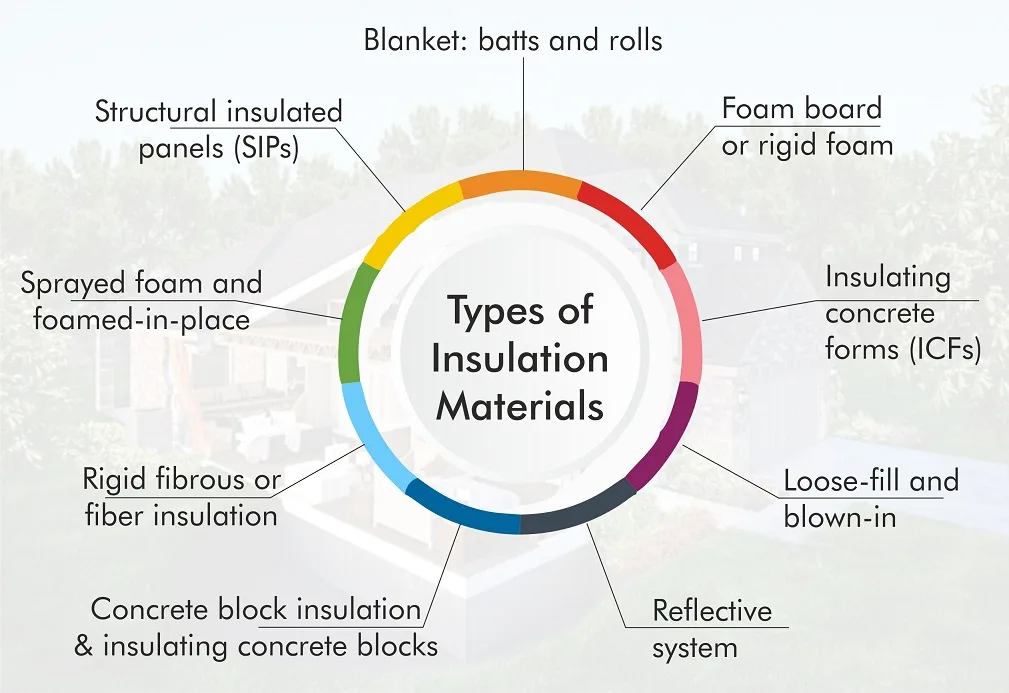One component of the building construction that is mostly neglected or considered minor is insulation. Contrary to the common belief, it is actually critical to a building’s energy efficiency and plays a vital role in making it green. If insulation is not taken care of properly, large amounts of energy used for cooling or heating will be lost to the outdoors. We will talk about the benefits of insulation today and discuss some of the insulation materials.
How the insulation functions:
Insulation contains many tiny air cavities. When it is installed on a building’s interior or exterior surface, or in building cavities, it checks heat transmission. Thus it provides a layer that prevents/ slows down heat from going out and coming in. Before knowing about the benefits of building insulation, it’s important to know that each type of insulation material gets an R-value rating- a measure of its thermal resistance. The higher the R-value, the better the insulator.
Building insulation- advantages:
- Conserves energy on heating or cooling a building, thus reduces energy consumption
- Saves considerable amount of money on electricity bills, HVAC equipment and also dehumidification of a building
- Reduces interior space temperature variability, thus enhancing comfort
- Good insulation also serves as noise, air and vapor barrier
- Some types of insulation materials can also add structural strength to buildings
Insulation materials:
Traditionally, mud, asbestos and cork were used as insulation materials, however, modern insulation materials available now are far more effective, especially if used with air sealing and ventilation. Let us talk a little about insulation strategies before taking up the types of insulation materials today.
To have a well-defined thermal boundary is The best way to insulate a building. This means that you are separating, through this thermal boundary, the conditioned (heated or cooled) spaces from unconditioned or outdoor areas. The important thing to note here is that a building should be insulated continuously around the thermal boundary, including edges and corners. Special care should be taken to insulate the surfaces of the ducts or furnace cabinets lying outside the thermal boundary. Sometimes conductive materials span across the thermal boundary, a phenomenon called thermal bridging, and allow heat to flow from one side to the other. Thermal bridging can be avoided by minimum use of conductive materials like steel, aluminum etc or by introducing thermal breaks to avoid contact between conductive materials.
Now, about the insulation materials.
The main insulation materials used these days include:
- Batts
- Rigid boards
- Spray foam
- Loose fill
- Structural Insulation Panels (SIPs)
- Insulated Concrete Forms (ICFs)

Last two are relatively new; costlier but more effective. They also serve other purposes like air and sound barrier and strengthening the structure; but they are still being used mostly in the developed countries only. Spray foam is the most widely used technology that is considered very effective, so let us know a little about it here.
Spray foam insulation:
It’s a very effective and versatile type of insulation. It has two components that are mixed on the tip of a spray gun, forming a liquid foam that expands and hardens on a surface. Polyurethane is the most common basis for spray foams; one caution though. Make sure that the spray foam you choose doesn’t contain any greenhouse gases, otherwise you will be starting on a wrong foot for your endeavor to produce a green building.

Although spray foam is ideally suited for irregular surfaces and small cracks or gaps etc; it can also be used effectively to insulate large areas like walls, ceilings and even roof exteriors.
A large number of insulation materials are available, one can choose the desired one after doing research about their requirements and properties of the material. R-value of a material usually depends on their quality. Remember, better insulation will cost more upfront, but you will save a lot in the long run as it will pay off with substantial energy savings and less wear and tear on HVAC systems. So, choose the best and make your building greener.
We will continue to discuss this crucial topic in our posts to know more about how to make our buildings, and our planet, greener and more hospitable. Don’t miss the fun!
Sources:
- https://en.wikipedia.org › wiki › Building_insulation
- https://www.ctc-n.org › technologies › insulation-buildings
- https://www.energy.gov › energysaver › insulation
- https://engisoftengineering.com › why-building-insulatio…
- https://in.pinterest.com/pin/857443216542179566/
- https://constrofacilitator.com/wp-content/uploads/2023/07/Types-of-Insulation-Materials\
ABOUT THE AUTHOR

Sandeep Singh is an architect from IIT Roorkee.
Ten years after graduating, he lost his vision to genetic Diabetes.
He reinvented his career and turned writer.
He has authored two fiction books and writes blogs on
Architecture, Outsourcing, Safety and a variety of other
subjects for different organizations. He also chairs and runs two NGOs
